Growing sweet potatoes in your home garden is a rewarding and surprisingly straightforward process.
As an avid gardener, I’ve found that these versatile and nutritious tubers offer both a bountiful harvest and a unique addition to the garden landscape.
Sweet potatoes, with their sprawling vines and heart-shaped leaves, not only yield a delicious crop but also bring a decorative element to garden beds.
In this article, we’ll explore the benefits of growing sweet potatoes, delve into some of my favorite varieties, and provide you with care tips to ensure a successful harvest.
Benefits of Growing Sweet Potatoes
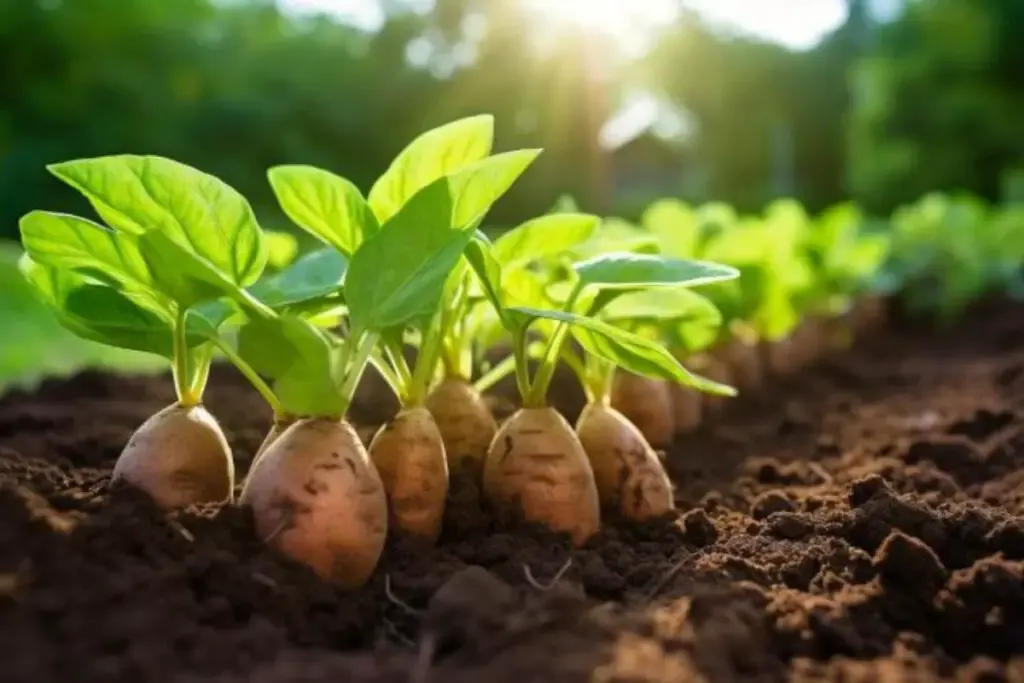
1. Nutritional Value
Sweet potatoes are a powerhouse of nutrition, packed with vitamins A and C, fiber, and antioxidants. Growing them at home lets you enjoy their health benefits fresh from the soil.
2. Ease of Growing
Sweet potatoes are relatively easy to grow. They are hardy, not very prone to pests, and can thrive in a variety of soil conditions, making them an excellent choice for both novice and experienced gardeners.
3. High Yield
One of the most rewarding aspects of growing sweet potatoes is their high yield. A small number of sweet potato slips (young plants) can produce an abundant harvest, making the most of your gardening space.
My Favorite Sweet Potato Varieties
Sweet potatoes come in a variety of shapes, sizes, and colors. Here are three varieties that I find particularly delightful:
1. Beauregard
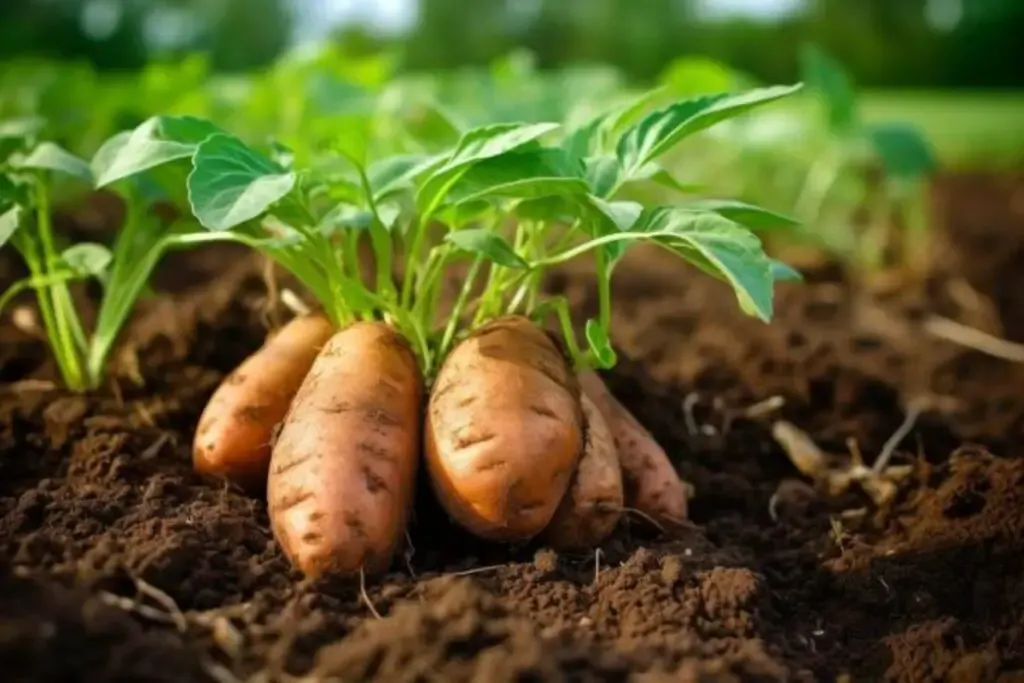
This is one of the most popular and widely grown varieties. Beauregard sweet potatoes are known for their uniform shape, excellent flavor, and versatility in cooking.
They have reddish-purple skin with vibrant orange flesh and are quite easy to grow.
2. Japanese Sweet Potato (Satsumaimo)
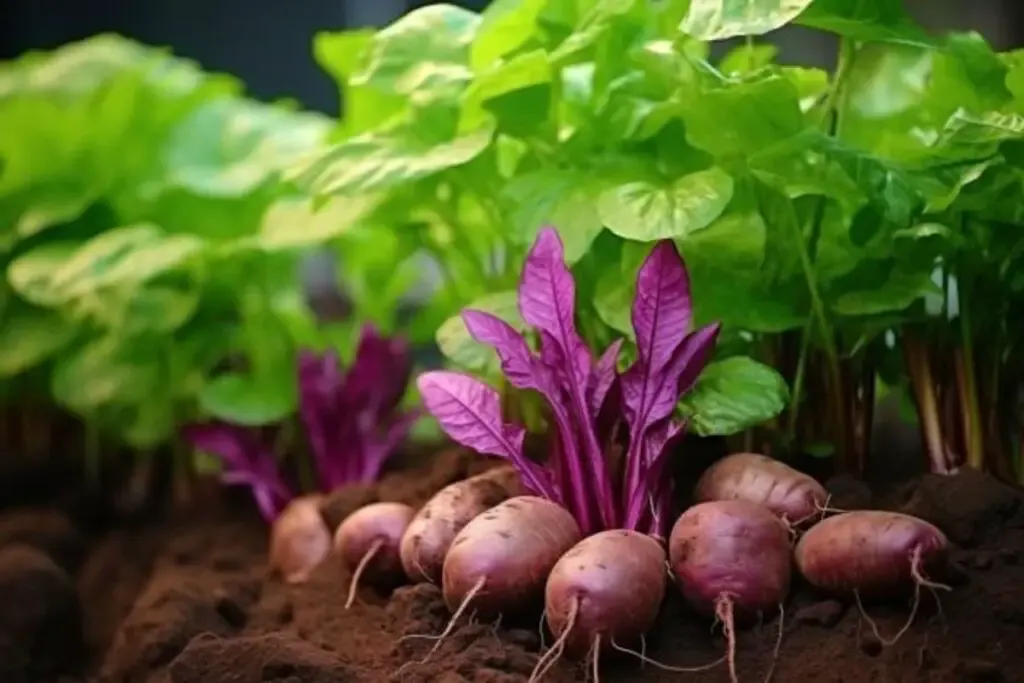
Known for its distinctive purple skin and white flesh, the Japanese sweet potato offers a unique, sweet flavor. It’s a bit more exotic and can be a fun variety to try in the garden.
3. Garnet
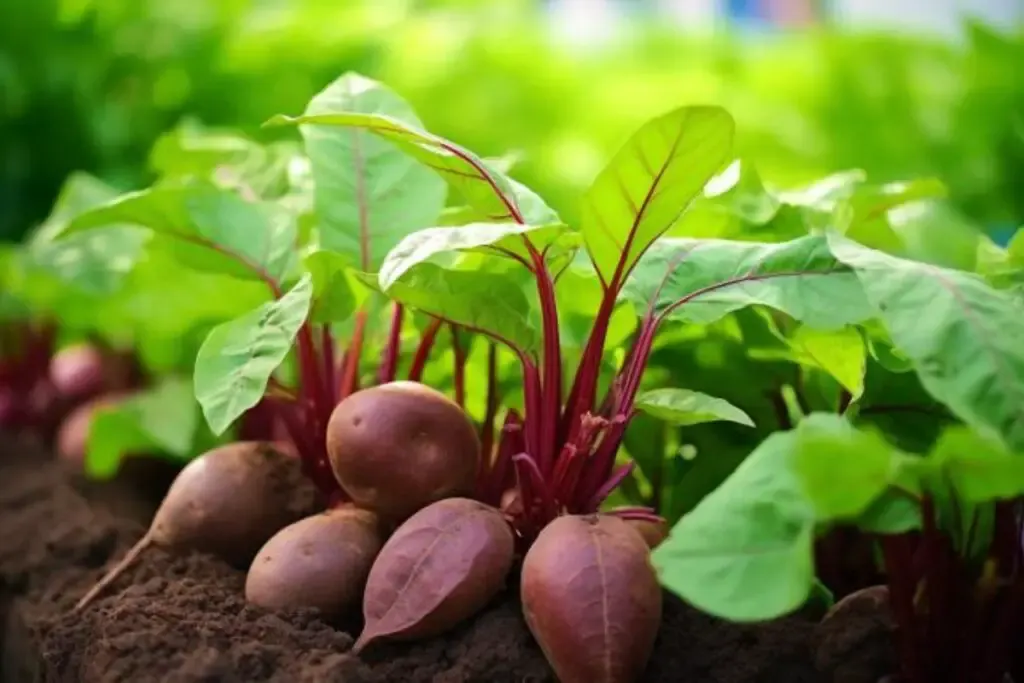
Often found in grocery stores, Garnet sweet potatoes have dark reddish-purple skin and deep orange flesh. They are known for their sweet taste and smooth texture, making them perfect for baking and roasting.
Sweet Potato Care
Caring for sweet potatoes involves understanding their specific needs to ensure a successful and bountiful harvest.
These warm-weather crops are relatively low-maintenance but do require some basic care and attention.
Let’s delve into the key aspects of sweet potato care, including planting, light requirements, soil conditions, water needs, temperature and humidity, and fertilizer use.
Planting

Sweet potatoes are typically grown from slips, which are sprouts that develop from mature sweet potatoes.
You can either purchase slips or start them yourself from a sweet potato. Plant slips in the garden about 2-3 weeks after the last frost date, when the soil has warmed up.
Space the slips about 12-18 inches apart in rows that are 3-4 feet apart. Sweet potatoes need room to grow, as their vines can spread widely.
Light
These plants thrive in full sun, requiring at least 6-8 hours of direct sunlight daily. Adequate sunlight is crucial for the development of the tubers.
If you’re growing sweet potatoes in a region with intense summer heat, some light afternoon shade can help protect the plants.
Soil
Sweet potatoes prefer well-draining, sandy soil with a pH of 5.5 to 6.5. They can tolerate slightly acidic to neutral soil conditions.
Before planting, work in plenty of compost or well-rotted manure to improve soil fertility and structure.
Water
While sweet potatoes are relatively drought-tolerant, consistent moisture is important, especially during the early stages of growth and tuber formation.
Water the plants regularly, allowing the soil to dry out slightly between waterings. Avoid over-watering, as this can lead to root rot.
Temperature and Humidity
Sweet potatoes grow best in warm temperatures, ideally between 75°F and 85°F. They require a long growing season of at least 90-120 days of warm weather.
In regions with high humidity, ensure good air circulation around the plants to prevent fungal diseases.
Fertilizer
Use a balanced, low-nitrogen fertilizer at planting time. Excessive nitrogen can encourage foliage growth at the expense of tuber development.
A phosphorus-rich fertilizer can encourage root growth. Side-dress the plants with compost or a balanced fertilizer midway through the growing season to support their growth.
Harvesting Sweet Potatoes
Harvesting sweet potatoes is an exciting time in the gardening calendar, marking the culmination of months of growth.
The best time to harvest is just before or right after the first fall frost. The foliage will start to yellow, indicating that the tubers are ready.
Gently dig around the plant with a spade or fork, being careful not to damage the tubers. Sweet potatoes need to be cured after harvesting to enhance their sweetness and extend shelf life.
Cure them by keeping them in a warm, humid place for about 10 days before storing them in a cool, dry area.
Pruning
Pruning is not typically necessary for sweet potatoes. Their sprawling vines can be left to grow, although some gardeners choose to trim them to keep the garden tidy or to prevent them from overshadowing other plants.
If you decide to trim the vines, do so sparingly, as the leaves are essential for photosynthesis, which fuels tuber growth.
Propagating
Sweet potatoes are propagated from slips, which are sprouts grown from a mature sweet potato. To grow your own slips, place a healthy sweet potato in a jar of water with half of it submerged.
Keep it in a sunny spot, and in a few weeks, slips will start to grow from the top. Once they’re about 4-6 inches tall, gently twist them off and plant them in the soil to start new sweet potato plants.
How to Grow Sweet Potatoes From Seed
Growing sweet potatoes from seeds is not a common practice, as they are typically grown from slips.
Sweet potato seeds can be difficult to find and may not produce plants identical to the parent. For most gardeners, growing from slips is the most efficient and reliable method.
Growing in Pots
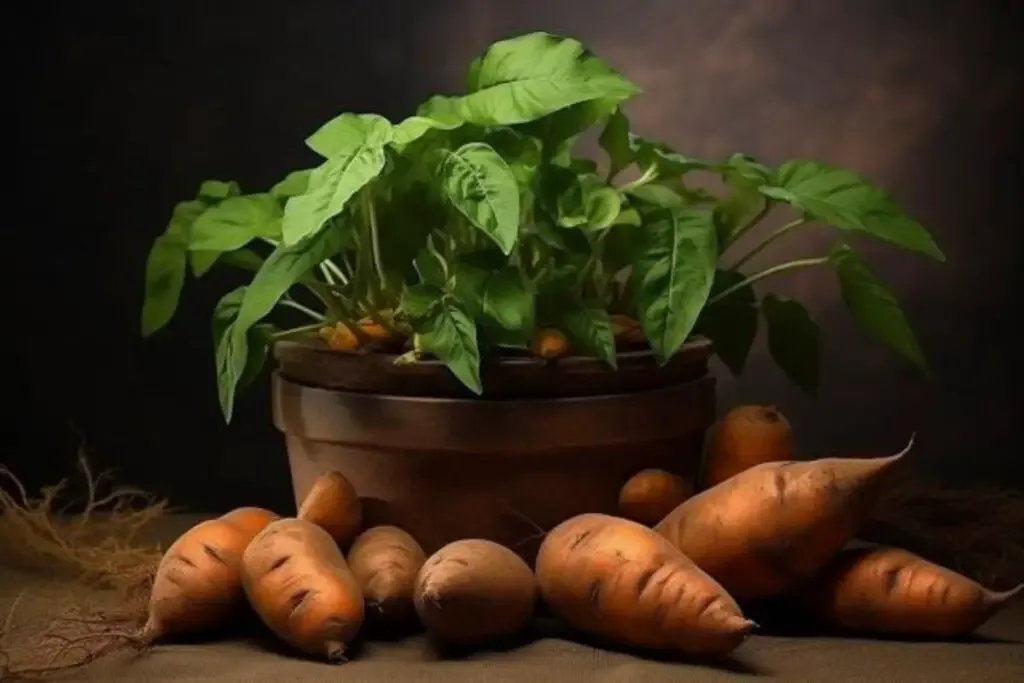
Growing sweet potatoes in pots or containers is possible and can be quite successful. Use a large pot at least 12-15 inches deep to accommodate the growing tubers.
Ensure the pot has good drainage and use a high-quality potting mix. Keep in mind that container-grown sweet potatoes may need more frequent watering than those grown in the ground.
Overwintering
Overwintering sweet potatoes generally involves storing the harvested tubers, as the plants themselves are not frost-tolerant.
After curing, store the sweet potatoes in a cool (about 55-60°F), dark, and well-ventilated place. Properly stored, they can last for several months.
Avoid storing them in the refrigerator, as cold temperatures can affect their flavor and texture. In warmer climates where the ground does not freeze, you can leave some tubers in the ground to sprout the following spring.
Transplanting
Transplanting sweet potatoes usually refers to planting the slips (young plants) outdoors. Transplant the slips after the danger of frost has passed and the soil has warmed up.
Plant them about 12-18 inches apart, allowing enough space for the vines to spread. Water the slips well after transplanting to help establish them.
Common Pests & Diseases
Sweet potatoes can be affected by several pests and diseases. Common pests include sweet potato weevils, wireworms, and nematodes.
These can be managed through crop rotation and good soil hygiene. Diseases such as sweet potato rot and black rot can occur, especially in overly wet conditions.
To prevent these, ensure good drainage and avoid overwatering. Fungal diseases can be minimized by allowing enough space between plants for air circulation.
Growing sweet potatoes in your garden can be a deeply satisfying experience. From watching the vigorous growth of the vines to unearthing the hidden treasures of the tubers at harvest time, each step in the process brings its own joy and excitement.
Sweet potatoes not only provide a nutritious and delicious addition to your meals but also embody the wonders of growing your own food.
With care and attention, they can be a gratifying crop, offering both a culinary treat and the simple pleasure of gardening success.

